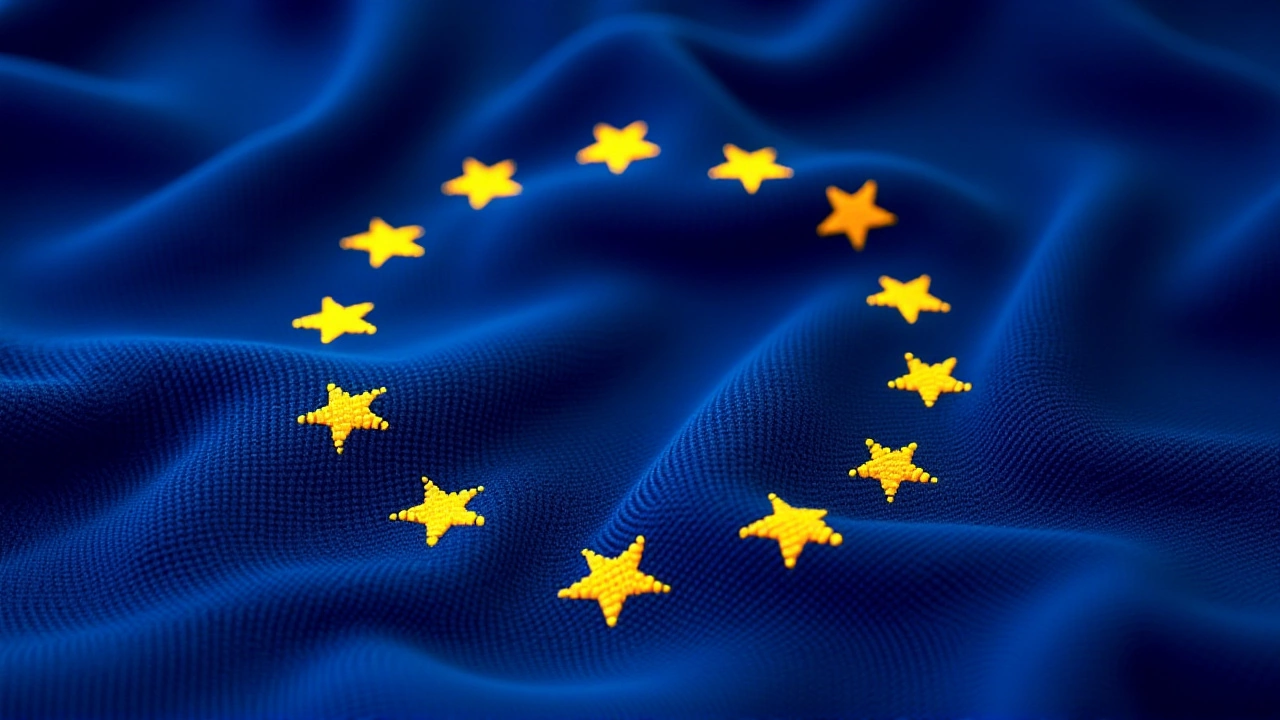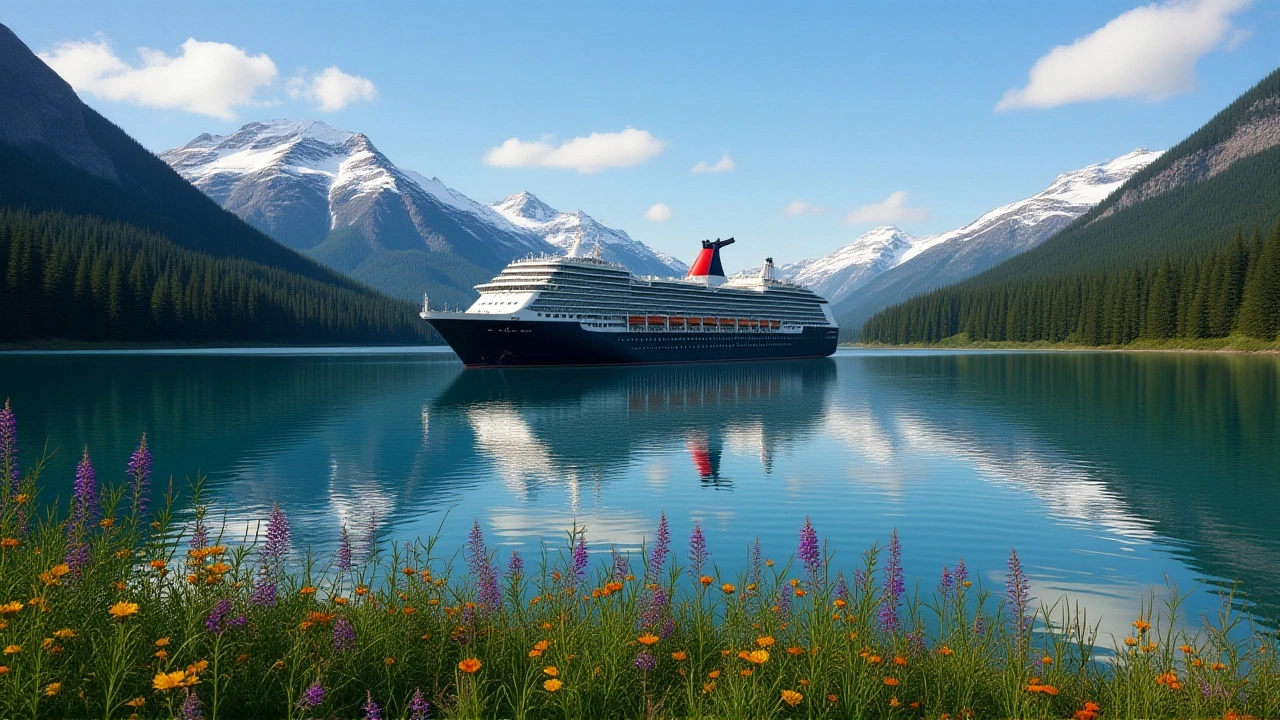EU Greenlights €119 Billion Trade Deals with Mercosur and Mexico, Unleashing Export Surge
 Nov, 16 2025
Nov, 16 2025
On September 3, 2025, the European Commission delivered a seismic shift in Europe’s economic strategy, formally proposing the ratification of two landmark trade pacts: the EU-Mercosur Partnership Agreement (EMPA) and the EU-Mexico Modernised Global Agreement (MGA). The move, announced by Maroš Šefčovič, Commissioner for Trade and Economic Security, unlocks an estimated €119 billion in annual export potential — a game-changer for European manufacturers, farmers, and small businesses caught in a volatile global trade climate. The deals, years in the making, now head to the Council of the European Union for approval, triggering a complex ratification process across all 27 member states, the European Parliament, and Latin American legislatures.
Why This Matters Now
It’s not just about more cars sold or more cheese exported. This is about resilience. After years of supply chain shocks, geopolitical fractures, and the slow creep of protectionism, the EU is betting big on diversification. The EU-Mercosur Partnership Agreement alone could lift EU exports to the South American bloc — Argentina, Brazil, Paraguay, and Uruguay — by 39%, adding €49 billion annually and supporting 440,000 European jobs. Meanwhile, the modernized deal with Mexico builds on existing €70 billion in annual trade, which already sustains 630,000 jobs in the EU. These aren’t incremental gains. They’re lifelines.
The Tariff Takedown
Here’s where it gets real. Right now, European cars face up to 35% tariffs in Mercosur markets. Machinery? 14% to 20%. Pharmaceuticals? Up to 14%. Under the new deal, most of those vanish — phased out over five to ten years. For Mexican markets, the stakes are even higher. Tariffs on European cheese, wine, chocolate, and pasta once hit 100% in some cases. That’s not trade — that’s a wall. The EU-Mexico Modernised Global Agreement tears it down. The EU’s 568 Geographical Indications — from Parmigiano Reggiano to Champagne — get legal protection. That’s not just branding. It’s economic sovereignty.
And it’s not just goods. The MGA opens up government procurement in Mexico to EU firms — something that was nearly impossible before. Small businesses get simplified rules. Automotive standards are aligned through a new annex. It’s the kind of detail that makes or breaks market access.
Green Transition, Locked In
What makes these deals different from past agreements? The green clause. Literally. Both pacts include enforceable commitments on climate, labor rights, and environmental standards — not just as footnotes, but as binding chapters. The EU-Mercosur Partnership Agreement specifically secures access to lithium, graphite, manganese, fluorspar, antimony, and copper — the backbone of EV batteries, solar panels, and wind turbines. Brazil, with its vast mineral reserves, stands to become a key supplier. And the deal includes a dedicated chapter on green hydrogen and biofuels, positioning the EU and Mercosur as co-leaders in the energy transition.
"This isn’t just about trade," said Eric-Martin Schulz, Director General of the European Automobile Manufacturers Association on September 3. "It’s about securing the raw materials we need to build the future — and doing it with partners who share our values. Swift ratification isn’t optional. It’s urgent."

Who’s On Board? Who’s Holding Out?
The political winds are mixed. Luiz Inácio Lula da Silva, president of Brazil, has publicly pushed for signing the EMPA in 2025. But Javier Milei, Argentina’s president, remains elusive — his free-market rhetoric clashes with Mercosur’s collective decision-making model. Meanwhile, Marcelo Ebrard, Mexican Secretary of Economy, confirmed in January 2025 that negotiations were complete, with Mexico aiming to sign the MGA this year — though final approval still rests with the Senado de la República.
The EU side is unified — but the ratification gauntlet is long. Each of the 27 member states must approve. The European Parliament will weigh in. And then there’s the domestic politics in Latin America. Delays are likely. But the momentum is real.
Bigger Picture: The New Latin American Arc
Before these deals, the EU covered just half of Latin America’s GDP in trade terms. Now, with Mercosur and Mexico locked in, it jumps to 97%. That’s not just a number. It means the EU is no longer a passive observer in the region. It’s a strategic partner — second only to China in goods trade with Mercosur, and second only to the U.S. in foreign investment in Mexico. The EU poured nearly $400 billion into Mercosur over decades. That’s not charity. It’s infrastructure. Now, it’s being formalized.
And here’s the quiet win: this is Mercosur’s first-ever external trade agreement. For decades, the bloc was seen as inward-looking, slow-moving, and politically fragmented. This deal changes that. It signals a new ambition — to be a unified player on the world stage, not just a collection of resource-rich nations.

What’s Next?
The next 12 months will be decisive. The Council of the European Union must give its green light by early 2026. If approved, national parliaments will begin their reviews — some will demand environmental impact assessments. The European Parliament will hold hearings. In Mexico, the Senate will debate. In Brazil, Lula will need to navigate opposition in Congress. In Argentina, Milei’s allies may push for renegotiation.
But the interim trade agreement — the iTA — is set to expire. That means the clock is ticking. If the EU and Latin America don’t move fast, the legal vacuum could trigger uncertainty for exporters already struggling with inflation and shipping delays.
Why This Isn’t Just About Trade
Let’s be honest: these agreements are about power. The EU is trying to reduce its reliance on China for critical minerals. It’s trying to anchor Latin America to democratic, rules-based trade norms. It’s trying to show that Europe can still lead — not with sanctions, but with opportunity.
For European farmers, it means access to 270 million consumers in Latin America who are increasingly middle class. For German engineers, it means selling more electric vehicles without paying crippling tariffs. For Spanish winemakers and Italian pasta makers, it means their products won’t be priced out of Mexican shelves anymore.
This is economic statecraft at its most effective — not shouted from podiums, but quietly negotiated over years, and now, finally, ready to deliver.
Frequently Asked Questions
How will these deals affect European farmers and food producers?
The EU-Mexico agreement eliminates tariffs as high as 100% on key agri-food exports like cheese, wine, chocolate, and pasta — products that currently face prohibitive barriers. With 568 EU Geographical Indications protected, producers like Parmesan makers or Champagne houses gain legal rights in Mexican markets. This could boost EU agri-food exports to Mexico by 25–30% within five years, directly benefiting 120,000+ rural jobs across Italy, France, Spain, and Ireland.
What’s the timeline for full implementation?
Ratification could take 18–24 months. The EU Council must approve first, followed by votes in all 27 national parliaments and the European Parliament. Mexico’s Senate and Mercosur countries (Argentina, Brazil, Paraguay, Uruguay) must also ratify. Tariff reductions will phase in over five to ten years, with full implementation expected by 2030–2035. The interim agreement expires in 2026, so delays risk market instability.
Why is the EU so focused on critical minerals in these deals?
The EU imports over 98% of its lithium and 85% of its graphite from outside Europe — mostly from China. The EMPA secures direct access to Brazil’s lithium reserves and Argentina’s lithium triangle, plus copper and manganese from Chile and Peru via Mercosur. This reduces supply chain risk for EV batteries and renewable tech, aligning with the European Green Deal’s goal of securing 10 million tons of critical minerals annually by 2030.
How do these agreements compare to past EU trade deals?
Unlike earlier deals, these include legally binding environmental and labor chapters — not just aspirational goals. The Mercosur deal is the EU’s first with a South American bloc, and the Mexico update is the most comprehensive since 2000. It’s also the first to include a dedicated annex for motor vehicles and a specific chapter on critical minerals. The scale of tariff elimination — especially on cars and agri-food — surpasses even the EU-Japan deal.
What happens if Mexico or Brazil delays ratification?
If either country stalls, the agreements can’t enter force — even if the EU ratifies. Mexico’s Senate has historically blocked trade deals over agricultural concerns; Brazil’s Congress may demand stronger environmental safeguards. Without ratification, the current EU-Mercosur interim agreement expires in 2026, leaving exporters without legal certainty. That could trigger retaliatory tariffs or lost contracts, especially for German and French automakers.
Will these deals hurt European farmers in other markets?
Some EU farmers fear increased competition from Brazilian beef and Argentine soy. But the deals include safeguards: quotas on sensitive products, strict sanitary standards, and a 10-year phase-in period. The EU also committed to investing €200 million in sustainable agriculture in Mercosur — a move designed to level the playing field and prevent dumping. The goal isn’t to flood markets, but to create mutual, rule-based access.